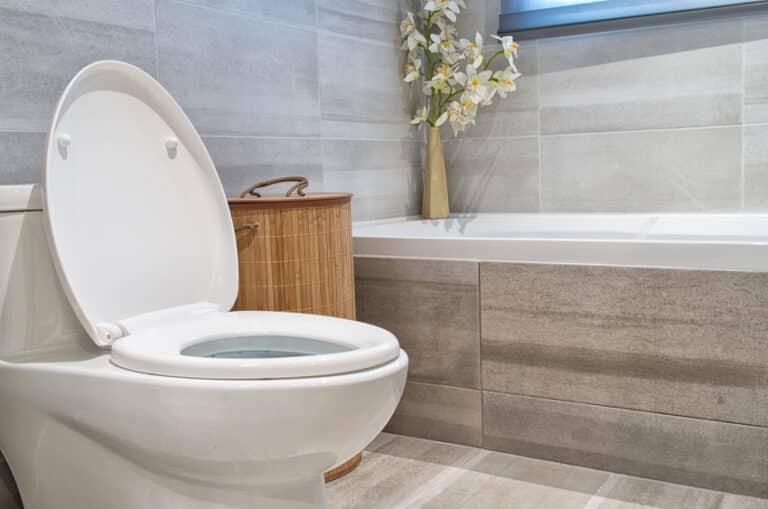How Much Does A Toilet Weigh? (What You Need To Know)
Here we answer how much does a toilet weigh, including different types of fixture weight by model such as standard, one-piece, two-piece, floating, and portable toilets.

If you are building a new bathroom or just renovating an existing one, one of the first things you might want to consider replacing is your toilet.
When considering a new toilet, you might want to know its weight, as this may affect the time, effort, and installation cost.
How Much Does a Toilet Weigh?
Toilets, in general, are heavy bathroom fixtures. Understanding how much one weighs can factor into your construction plans, as not only will you have to lift the thing, but your flooring should be able to support the weight.
| Toilet Type | Weight Range |
|---|---|
| Standard Gravity Flush | 60 to 120 lbs (27 to 54 kg) |
| One-Piece | 80 to 120 lbs (36 to 54 kg) |
| Two-Piece | 70 to 100 lbs (32 to 45 kg) |
| Wall-Hung | 50 to 80 lbs (23 to 36 kg) |
| High-Efficiency & Dual-Flush | 60 to 120 lbs |
What is The Standard Toilet Weight?
On average, manufacturers produce toilets that weigh an average of around 66 to 120 pounds.
Take note that the weights we will discuss are the “dry weight” or the net weight of a toilet that doesn’t include the seat, lid, or water.
A fully installed commode, with water in the tank and a seat and lid installed, will weigh around 86 to 140 pounds as these elements will add about 20 pounds.
How Much Does a Porcelain Toilet Weigh?
Porcelain is the most common toilet material, and the material that it is made of really affects its weight.
While other factors will affect the final weight, on average, a porcelain toilet will weigh between 60 to 120 pounds.
One-Piece Toilet Weight
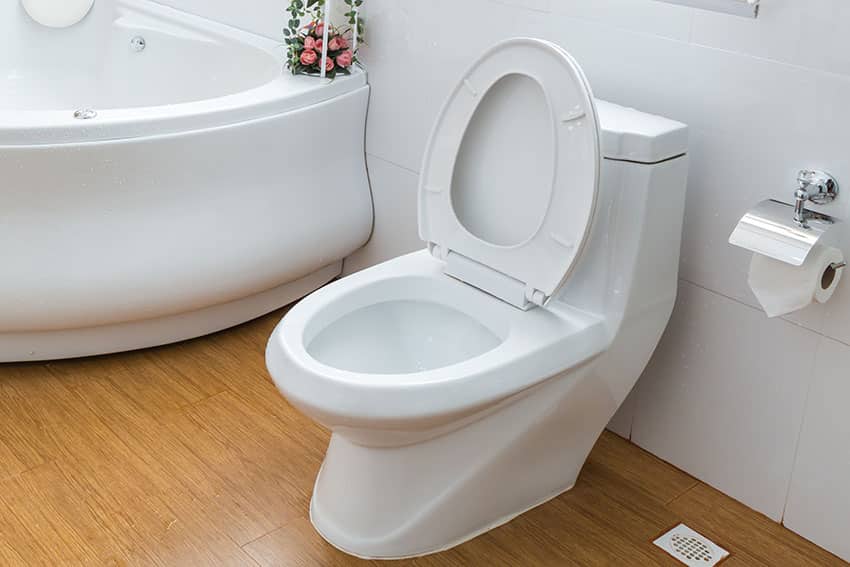
With the rise of modern bathroom designs, one-piece toilets are starting to get more popular. The sleek and seamless look of a one-piece unit allows it to fit in quite nicely with the overall aesthetic of a modern style bathroom.
One-piece toilets are molded into one fixture. The tank and the bowl are connected. While it might seem like this would make them easier to install, when we consider the weight, it might give you pause.
A one-piece toilet will weigh an average of 88 to 120 pounds. This means you and your helpers have to be able to carry the entire thing in one go. Depending on the size and shape of the doorway and the room, it could also be hard to maneuver a one-piece model into place.
In other words, your sleek-looking one-piece commode could actually be a clunky, bothersome package when you’re trying to wrestle it into its proper place in your bathroom.
Two-Piece Toilet Weight
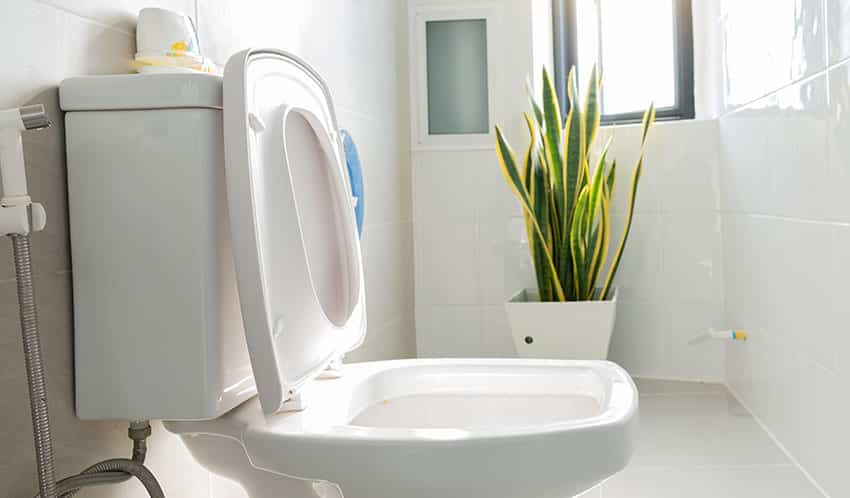
Two-piece toilets are one where the two main components, the bowl and the tank, can be separated.
Since the bowl and the tank are separated, you can ship them individually and carry the parts into your bathroom. Lugging two individual parts is easier than lugging one whole commode, as the separate parts are lighter.
The total weight of a two-piece toilet should be around 70 to 100 pounds. Separately, however, the bowl will weigh about 50 to 60 pounds. The tank should be lighter, around 25 to 40 pounds.
Floating Toilet Weight
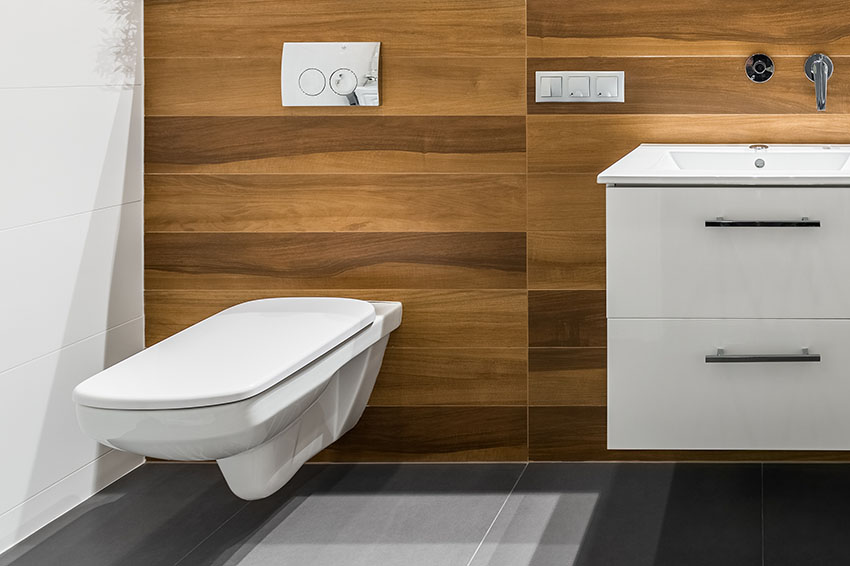
Floating toilets are also known as wall-hung commodes because they hang “floating” on the wall. These types of toilets are more commonly used in commercial establishments, but they can also be a practical choice for a small residential bathroom.
As they are “hung” from a frame-mounted into the wall, they are designed to be lightweight, weighing about 50 to 80 pounds.
Portable Toilet Weight

Portable toilets aren’t really something you will see in the bathroom of a residential home or even a commercial establishment or business office.
Portable toilets are small, compact units that are used in situations where the restroom facilities need to be moveable. Think about the portable potties at outdoor events or the commodes you might find on hiking trails.
Given that these portable toilets are designed to be movable, it shouldn’t be too surprising to hear that they are lightweight as well. Mostly made out of plastic, portable products come in models that weigh about 10 to 15 pounds.
What Determines the Weight of a Toilet?
Here are a few things that will determine the weight of toilets:
Material – One of the most common materials that toilets are made of is porcelain, a type of ceramic made by combining clay with a mineral such as quartz or silica.
Porcelain toilets are molded and then hardened in a kiln. Porcelain is a popular choice because it is tough and waterproof.
Other materials that they can be made of that are not as common but are a little lighter are stainless steel, resin, and plastic.
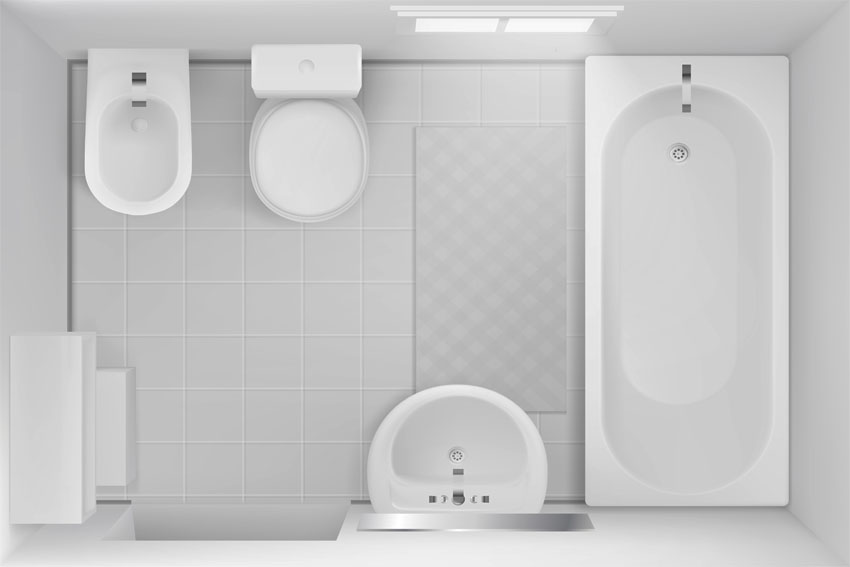
Footprint – This is the amount of space that a toilet will use. Toilets are designed and sized to fit in specific areas.
For example, you can find compact models designed to fit in a small bathroom or a restroom for a commercial establishment where a shower or bathtub isn’t needed.
The bigger the footprint, the bigger the size of the bowl and the heavier it will weigh. Read more about the different types of toilet flush systems here.
The shape of the bowl – You can find toilets with bowls that are either rounded or elongated, and this can affect the overall weight of the item as well.
Elongated toilets are a few inches longer than round ones, which adds a bit more to their size and bulk, which makes those with elongated bowls a little heavier.
Extra style elements – The shape and style can also affect its weight. If you choose a toilet designed with a little extra style elements, such as trim or fancy molding, this could add to the weight because this is a bit of extra material that adds heft.
How Much Does a Toilet Seat Weigh?
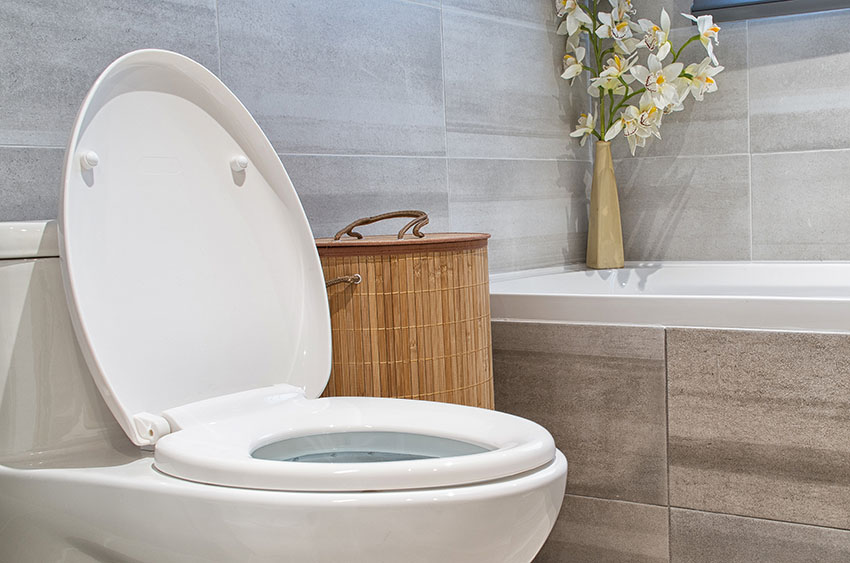
A toilet seat, compared to the other parts, is relatively light, probably a pound or a little more. This is mostly because of the material that a seat is made of.
You can find toilet seats made of plastic, wood, polyresin, duroplastic, and fiberboard – much lighter weight materials than porcelain.
For more related information on bathroom renovations, you can see our bathroom remodel ideas here.






